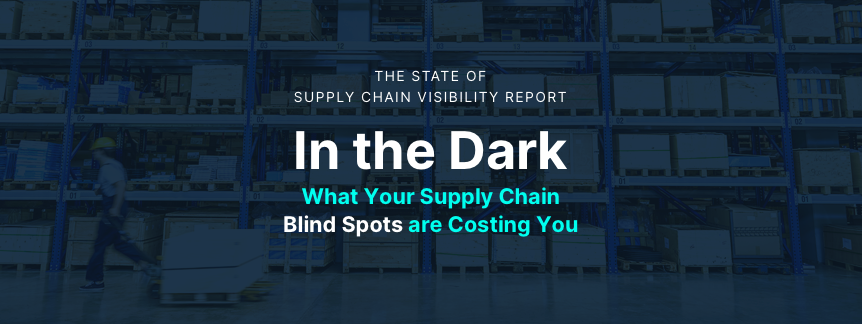Key Findings from Our New State of the Supply Chain Visibility Report
By Mahesh Veerina
It’s no question that COVID-19 has severely disrupted supply chains around the world, exposing blind spots, communication issues, and many other vulnerabilities. The pressure for organizations to achieve near-optimal visibility into their supply chains is now a top priority.
To understand organizations’ biggest challenges, where product loss is occurring in the supply chain, and what companies need to do to move forward in 2021, Cloudleaf teamed up with Sapio Research to survey over 200 U.S. supply chain decision-makers across the pharmaceutical and food & beverage industries.
Here’s a sampling of some of the key findings. Download the full industry report to get a more in-depth view of these industries and to find out how you can take advantage of increased supply chain visibility.
Key Findings
- 92% of total respondents said they could not 100% trust the data coming in from tracking products within their supply chain.
- 99% of respondents in the pharmaceutical industry claimed to be using some sort of manual processes to achieve supply chain visibility.
- Product damage or spoilage (30%), temperature excursions (25%), unexpected delays (24%), lost or misplaced inventory (21% and compliance issues (20%) are the top 5 current supply challenges plaguing these two industries.
- The overwhelming majority (87%) of respondents in the pharmaceutical industry said they do not have 100% visibility into the condition of products in their supply chain during the last mile of delivery.
Lack of Supply Chain Visibility Has Severely Impacted Pharma Industry
The pharmaceutical industry is one of the most complex industries, given the fact that they must rely on a complicated network of suppliers, logistics providers and manufacturers to get their products to the end consumer. In addition, they must contend with strict regulations and requirements such as batch-level traceability and a tightly controlled cold chain logistics infrastructure. These requirements are among the top challenges for the industry, which also included:
- Product damage or spoilage (34%)
- Lost or misplaced inventory (28%)
- Temperature excursions (25%)
- Compliance issues (21%)
- Not knowing the temperature while products are in transit (20%)
Food & Beverage Industry Also Challenged by Lack of Supply Chain Visibility
The food and beverage industry faces many of the same challenges as the pharma industry. The top challenges reported by food and beverage survey respondents included:
- Product damage or spoilage (28%)
- Temperature excursions (28%)
- Unexpected delays (28%)
- Lost or misplaced inventory (19%)
- Compliance issues (19%)
- Inaccurate data (19%) – a tie between the last three
Overcoming Supply Chain Challenges
To move forward in the future, it’s clear that organizations need to track both hard and soft attributes within their supply chain. Hard attributes include location, temperature, vibration, humidity, etc., while soft attributes are things such as purchase orders, payment terms, weather, and traffic conditions. By tracking these changes in hard and soft attributes, companies can make more accurate predictions, plan better, make decisions faster, reduce risk and increase revenue. If both hard and soft attributes are tracked, blind spots can be eliminated in the supply chain and the progress in value can be clearly observed.
Once organizations can track both hard and soft attributes in real time, they can create a digital twin, which enables real-time analysis. This is where the real value of end-to-end visibility comes into play: this data can then be used to take timely action, mitigate risk and improve operations and planning.
Download the full 2020 State of Supply Chain Visibility Report to learn about all of the critical blind spots in today’s supply chain, and to find out what’s needed to move forward effectively in 2021.













